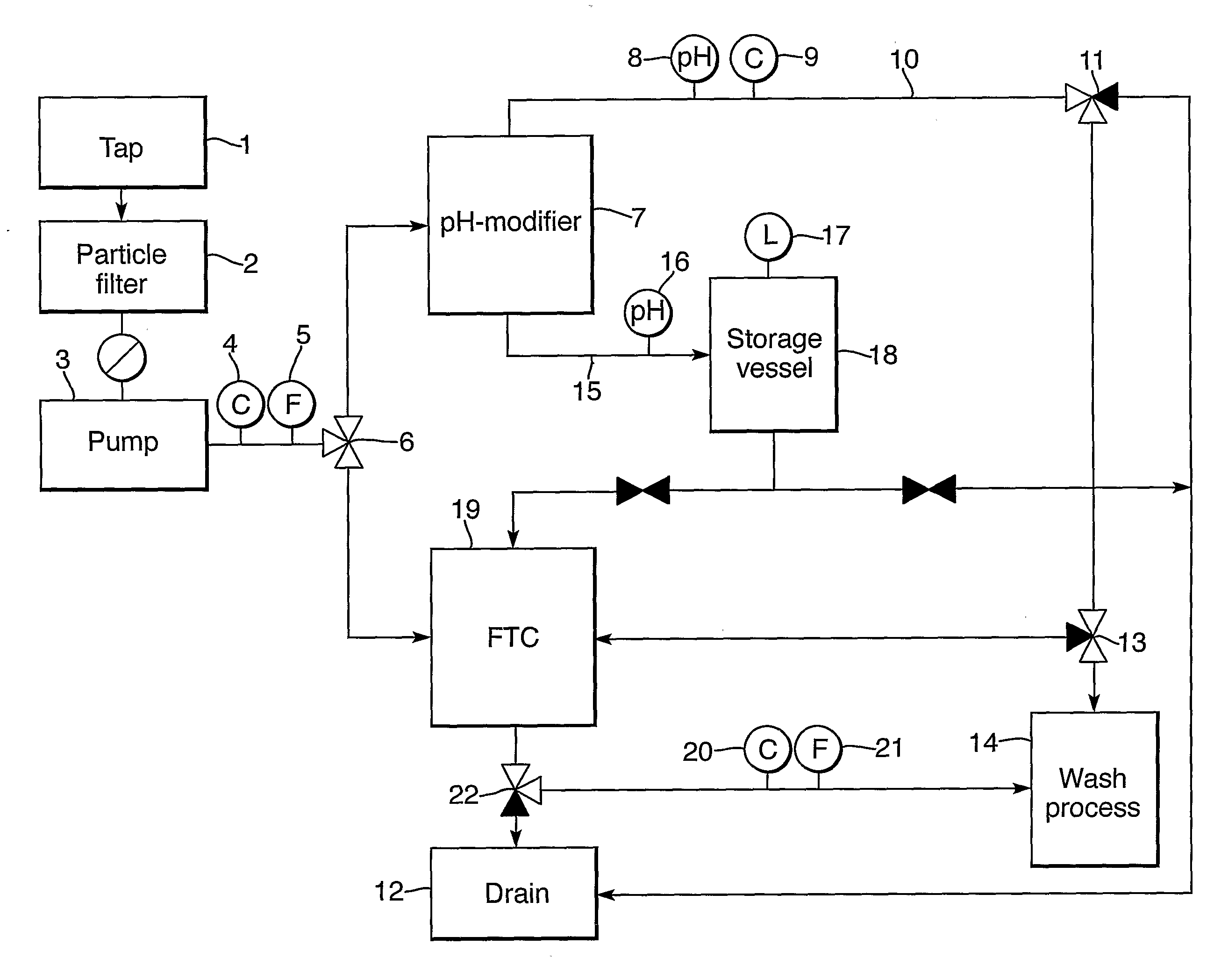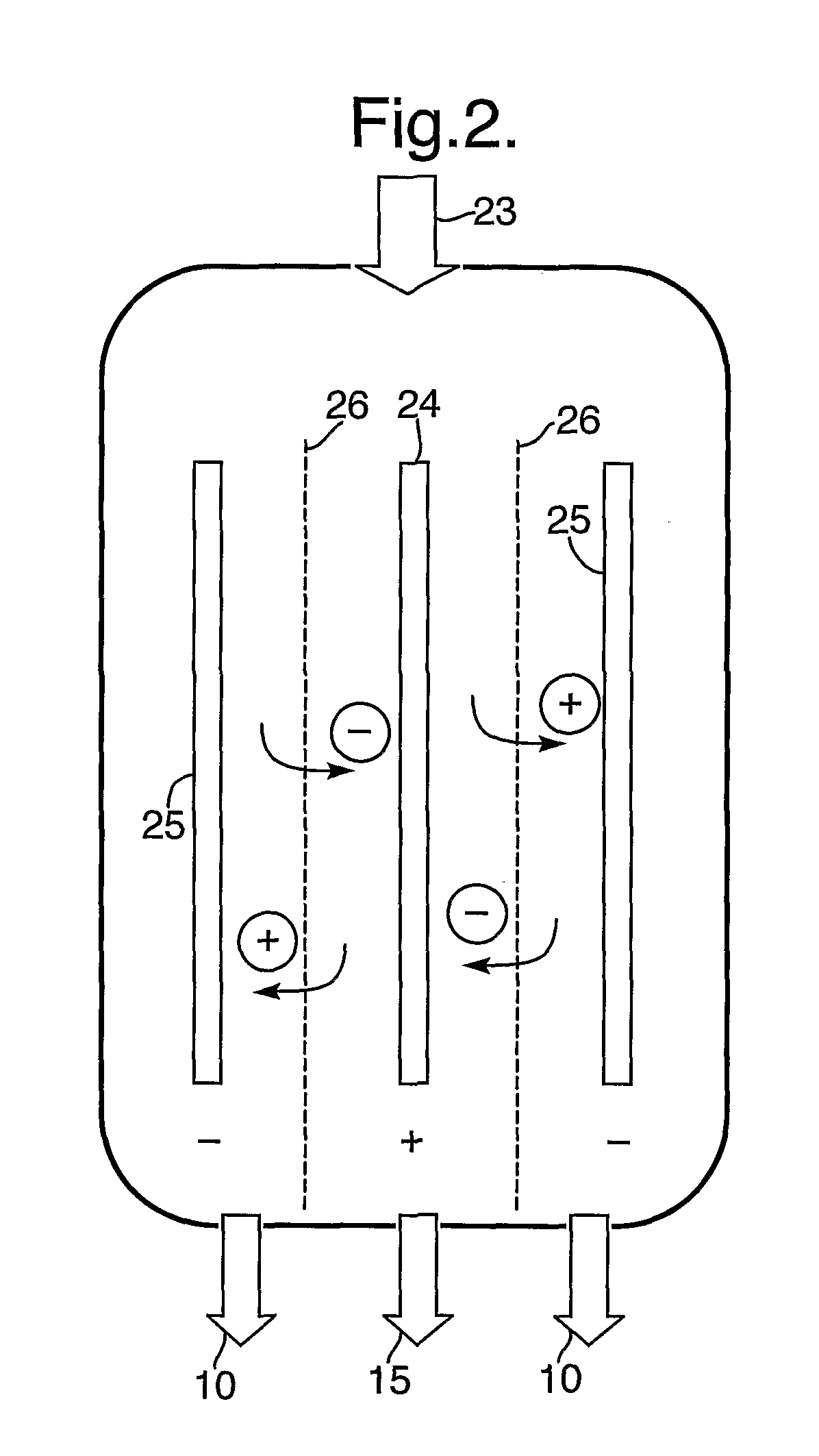Water Softening Device and Method
- Summary
- Abstract
- Description
- Claims
- Application Information
AI Technical Summary
Benefits of technology
Problems solved by technology
Method used
Image
Examples
example 1
Flow Through Capacitor
[0052]A sequence of a number of water softening steps under different conditions was carried out using a commercially available Flow Through Capacitor technology (Electronic Water Purifier (EWP), by Sabrex, Inc., San Antonio, Tex., USA). The equipment was used at its normal operation sequence of a water purification stage (250 ml) and a regeneration stage (150 ml). The water hardness in the various samples was determined by Inductively Coupled Plasma (ICP) spectroscopy.
[0053]At first the FTC unit was operated with regular Vlaardingen tap water (16.5° FH) for a period of 8 hours. During this time period the average hardness in the product stream was 0.2° FH whereas the average hardness in the regeneration waste stream was 43° FH (Table 1).
[0054]After 8 hours the FTC unit was operated with a feed of demi-water (demineralised water with a hardness of 0° FH) as feed for three consecutive cycles of purification and regeneration. The average hardness in the product s...
example 2
pH Modifier
[0059]Using an electrolysis cell, tap water was split into an acidic and an alkaline product stream. The lay-out of the electrolysis cell used in this example is similar to the cell described in FIG. 2. In this case however, the cell consisted of three cathodes and two anodes (hence four electrode pairs) to increase the total electrode surface area and hence the capacity. The electrode dimensions were approximately 12 by 6 cm per electrode and made of stainless steel with a Ruthenium-Iridium coating. The applied voltage over the electrodes was 42 V.
[0060]The flow rate entering the cell was approximately 100 L h−1 with a total volume of about 2 L. The volume ratio between the alkaline and the acidic product flow was about 9:1. The pH of the alkaline product stream was approximately 11 and the pH of the acidic product stream was approximately 2.
PUM
| Property | Measurement | Unit |
|---|---|---|
| Percent by mass | aaaaa | aaaaa |
| Acidity | aaaaa | aaaaa |
| Acidity | aaaaa | aaaaa |
Abstract
Description
Claims
Application Information
 Login to View More
Login to View More - R&D
- Intellectual Property
- Life Sciences
- Materials
- Tech Scout
- Unparalleled Data Quality
- Higher Quality Content
- 60% Fewer Hallucinations
Browse by: Latest US Patents, China's latest patents, Technical Efficacy Thesaurus, Application Domain, Technology Topic, Popular Technical Reports.
© 2025 PatSnap. All rights reserved.Legal|Privacy policy|Modern Slavery Act Transparency Statement|Sitemap|About US| Contact US: help@patsnap.com



